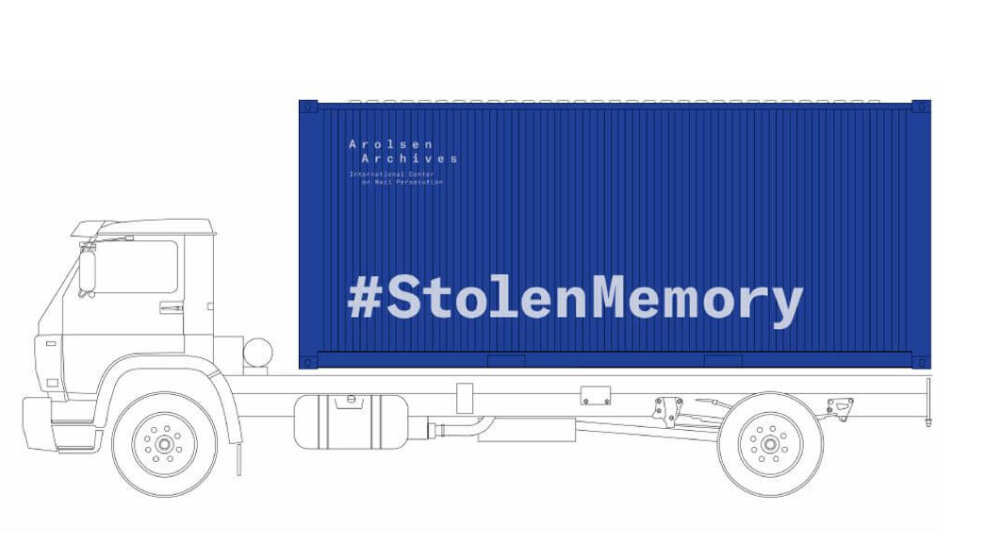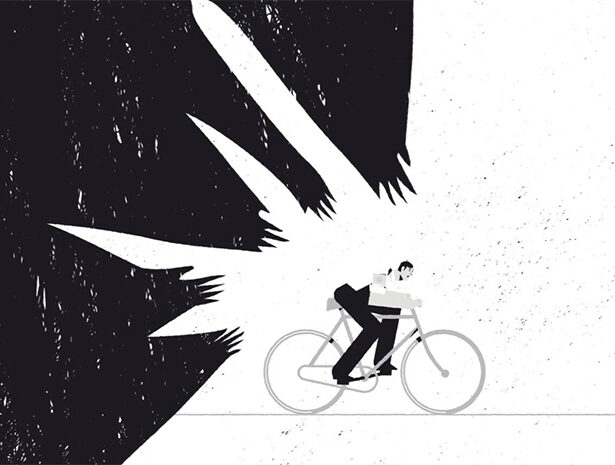#StolenMemory
on tour

All you have to do is open the doors: All three of our #StolenMemory exhibition containers are currently on tour, stopping off at various locations in Germany, Poland, Belgium and France to tell the story of the fates of ten concentration camp prisoners, some of whose last possessions are still kept in the Arolsen Archives.
Wedding rings, children’s photos, family heirlooms – when the Nazis admitted prisoners to concentration camps, they confiscated all their personal belongings. The Arolsen Archives still have around 2500 envelopes that contain personal possessions belonging to people from more than 30 different countries. These items are not part of the archival holdings as such, but are waiting to be returned to the families of their owners.
Since the start of the #StolenMemory campaign, we have been able to return over 700 of these so-called effects to the families of Nazi persecutees thanks to the dedication of our many volunteers. The items that have already been returned are of immeasurable value to the relatives of the people concerned; they make remembering and remembrance more tangible and are often the last remaining traces of the victims. Our #StolenMemory exhibitions provide information about the fates of the persecutees and invite people to support the campaign by carrying out their own research.

Wiesława Brzyś’s personal belongings are presented in the travelling exhibition. They could be returned in the meantime.
On the road in a mobile container
The traveling exhibitions are housed in converted shipping containers with side walls that fold out. #StolenMemory uses photos of objects that were confiscated from their owners to tell the stories of five individuals whose relatives we are still looking for. Five other posters tell the stories behind personal items that have already been successfully returned to families.
Thanks to an augmented reality app, the relatives themselves also have the opportunity to talk about their own experiences. Anyone can download the app and point their smart phone at a poster to watch short interviews in which relatives of the objects’ owners describe the persecution their family members suffered and talk about what the objects mean to them now they have been returned. Other posters provide information about the concentration camp system and the #StolenMemory campaign.

The exhibition is installed in an overseas container that is transported on a truck and placed in a central location with public traffic.
Emotional access
By using a biographical angle and focusing on the fates of individual victims, the exhibitions encourage visitors to respond at an emotional level. This approach is particularly suitable for addressing young people. This video shows visitors describing their impressions after visiting a #StolenMemory traveling exhibition:
Cooperative projects with local institutions, such as schools and associations, give young people the opportunity to work with biographies and documents and search for the traces of relatives themselves. Free educational materials are available for download on the #StolenMemory website for this purpose.
The website features a range of interesting resources: Short animated films with supplementary web stories and video interviews with relatives tell of the fates of various individuals. The website also provides information about the route of the traveling exhibition and shows 360-degree views of some of the objects. The animated films featured on the #StolenMemory website have already been shown at various international film festivals, and in June 2021, they won the Grimme Online Award in the category “Knowledge and Education.”
Funding provided by Germany’s Federal Government Commissioner for Culture and the Media under a program to promote culture in rural areas made it possible to design and build the first #StolenMemory exhibition container. The second container was financed by the Arolsen Archives themselves. Container no. 3 was sponsored by a generous gift from the U.S. diplomatic missions in Germany and Poland and will tour both countries. A large proportion of the people who owned the effects stored in the archive were Polish or German.
Architect Stefan Blaas designed the container which was engineered and built by the Berlin-based company Containermanufaktur.
We come to you
Towns and villages do not have to pay to host a #StolenMemory exhibition – the Arolsen Archives provide the containers free of charge and organize their transport to and from each venue. We also support you by providing flyers, brochures, and posters, and we can assist you with PR too.
All we need is a good location with a lot of foot traffic. Because the idea behind the traveling exhibition is that people should “stumble” across it in a public space – seeing the personal objects and learning about the fates of their owners prompts people to think about Nazi persecution and its after-effects right up to the present day.


